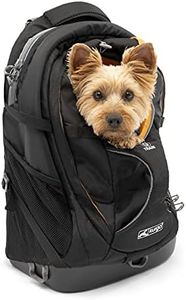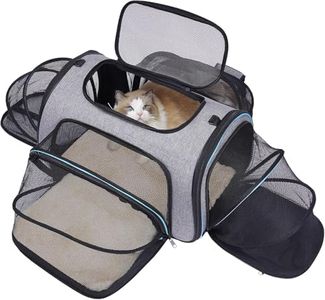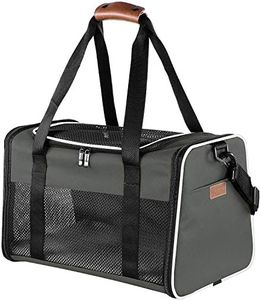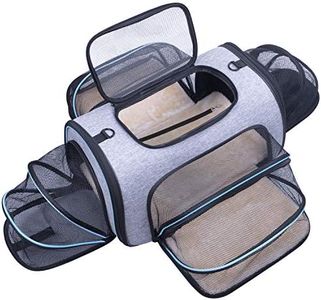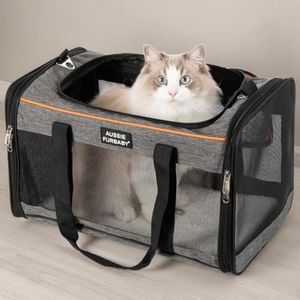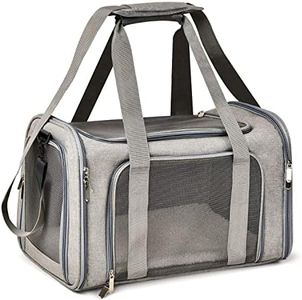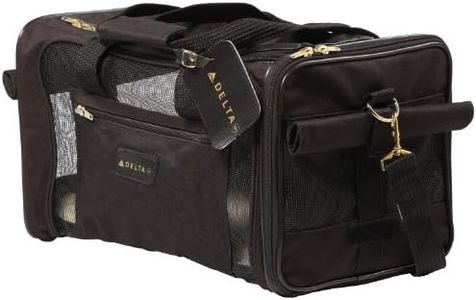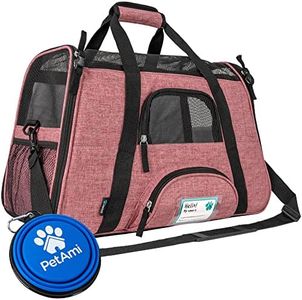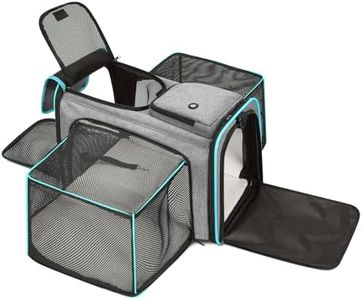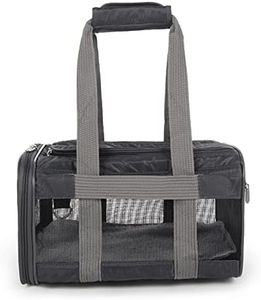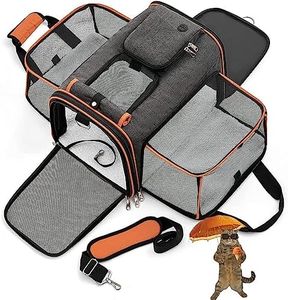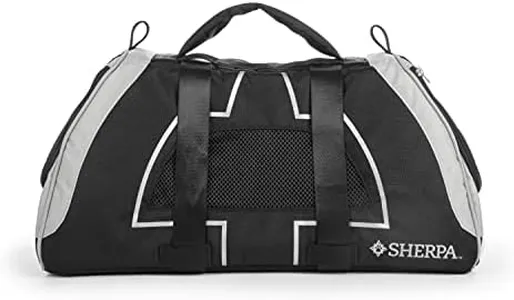We Use CookiesWe use cookies to enhance the security, performance,
functionality and for analytical and promotional activities. By continuing to browse this site you
are agreeing to our privacy policy
10 Best Tsa Approved Pet Carriers
From leading brands and best sellers available on the web.Buying Guide for the Best Tsa Approved Pet Carriers
Choosing the right TSA-approved pet carrier is essential for hassle-free travel with your pet, especially by air. The right carrier not only keeps your pet safe and comfortable, but also helps you pass smoothly through airport security and fit under your seat on a plane. Since TSA-approved carriers must adhere to specific guidelines for size, ventilation, and construction, it's important to check both the airline’s requirements and your pet’s needs before making a choice. Pay close attention to your pet’s comfort and your own convenience—think about how you’ll carry the carrier, and how easy it is to load, clean, and access your pet during travel.Size and DimensionsSize is about the overall length, width, and height of the carrier. This is crucial because airlines usually have strict rules on maximum carrier size that can fit under the passenger seat—often the main determinant for acceptance. Carrier sizes are typically categorized as small, medium, or large. Small carriers fit tiny pets like toy breeds and cats, while medium and large fit bigger cats and small-to-medium dogs. To pick the right size, measure your pet when it’s standing, sitting, and lying down to ensure there’s enough room for turning and lying comfortably, but not so large that they are tossed around. Always cross-check dimensions with your airline before purchase.
VentilationVentilation refers to the number and size of mesh panels or openings on the carrier. Good airflow is key for your pet’s safety and comfort, especially during longer flights. Carriers typically have mesh on one, two, or three sides. More mesh means better airflow and visibility for your pet, reducing stress. If your pet is easily startled, fewer mesh sides may help them feel secure but make sure there’s still enough airflow. Always ensure the carrier you select has at least two mesh sides—most airlines require this.
Material and ConstructionCarrier material includes both soft-sided and hard-sided options, and the choice impacts both flexibility and durability. Soft-sided carriers are more forgiving when measuring for under-seat storage; they’re lighter and easier to carry, but not as rugged. Hard-sided carriers provide more structure, which can give nervous pets a secure-feeling cave, but they’re heavier and less flexible with fit. Think about your pet’s behavior: a calm pet may be fine with soft sides, while escape-prone or anxious animals may be safer in a hard-sided carrier.
Openings and AccessibilityCarriers come with different entry points: front, top, or even side loading doors. A top entrance can make it much easier to place your pet inside, especially if they are nervous or resistant. Multiple doors may also help you reach in to comfort your pet, offer treats or quickly scoop them out for security checks. If your pet is shy or difficult to load, prioritize carriers with top or double openings.
Security and ClosuresSecurity features include zippers, locking mechanisms, and sturdy latches, ensuring that your pet stays safely inside. Some pets are crafty at unzipping or opening closures, so look for covered or locking zippers. This is especially important for anxious or curious pets. For pets that remain calm or are used to carriers, standard zippers may be sufficient, but always check that closure systems are robust.
Comfort FeaturesComfort features include padded interiors, removable bedding, and privacy flaps. These make the carrier a cozy space for your pet, encouraging them to relax. Look for a carrier with a soft, removable bottom for easy cleaning—as accidents or shedding can happen during travel. If your pet likes to hide, a carrier with flaps or covers over mesh windows can help them feel secure. Choose comforts based on your pet’s temperament and travel distance.
Portability and Carrying OptionsThis involves how you transport the carrier: handles, shoulder straps, or even backpack styles. Your comfort matters too, since you may need to carry the carrier through airports for long periods. A carrier with both hand straps and a shoulder strap gives you flexibility for short and longer hauls. Wheeled carriers are easier for larger pets but may not be accepted in-cabin, so prioritize based on your travel needs and your pet’s weight.
Easy to CleanCarriers should allow for quick cleaning, as pets can have accidents or get nervous during travel. Removable pads, wipeable materials, and accessible corners all make a difference. If you expect frequent trips or have a young or older pet, prioritize those with machine-washable or easily replaced padding and smooth interior surfaces.
